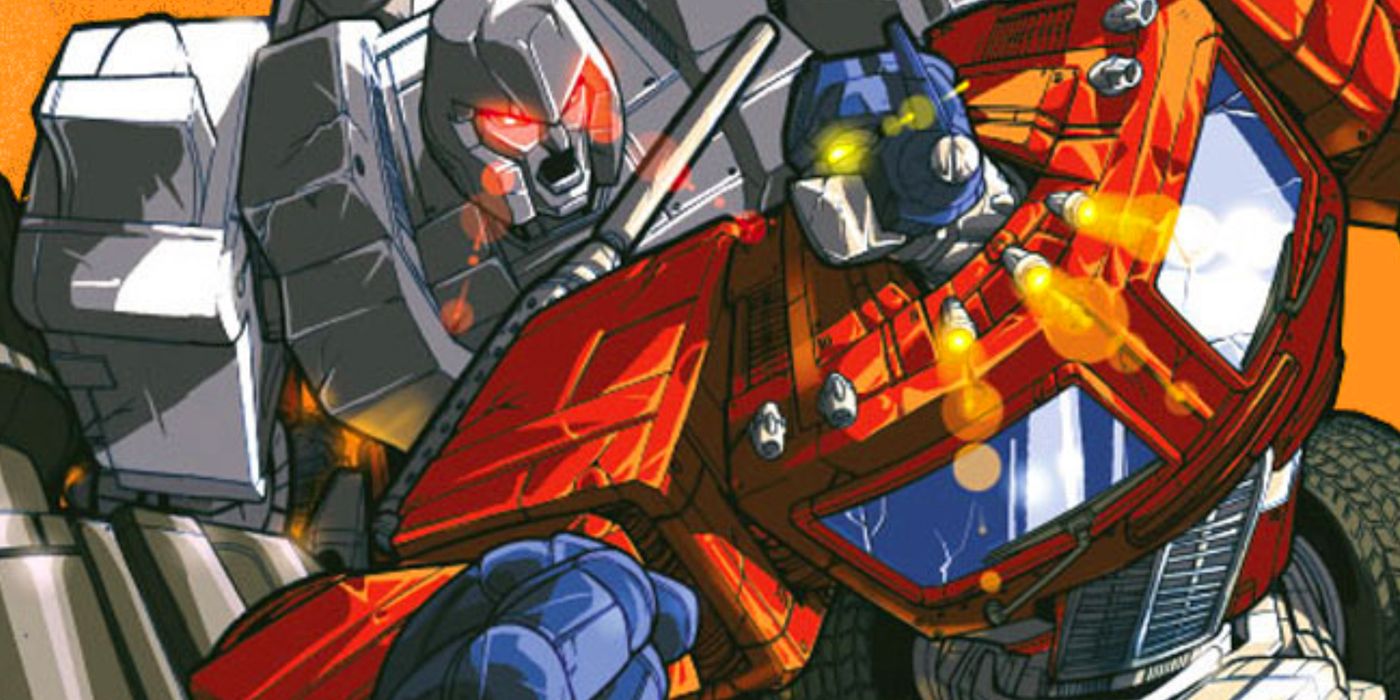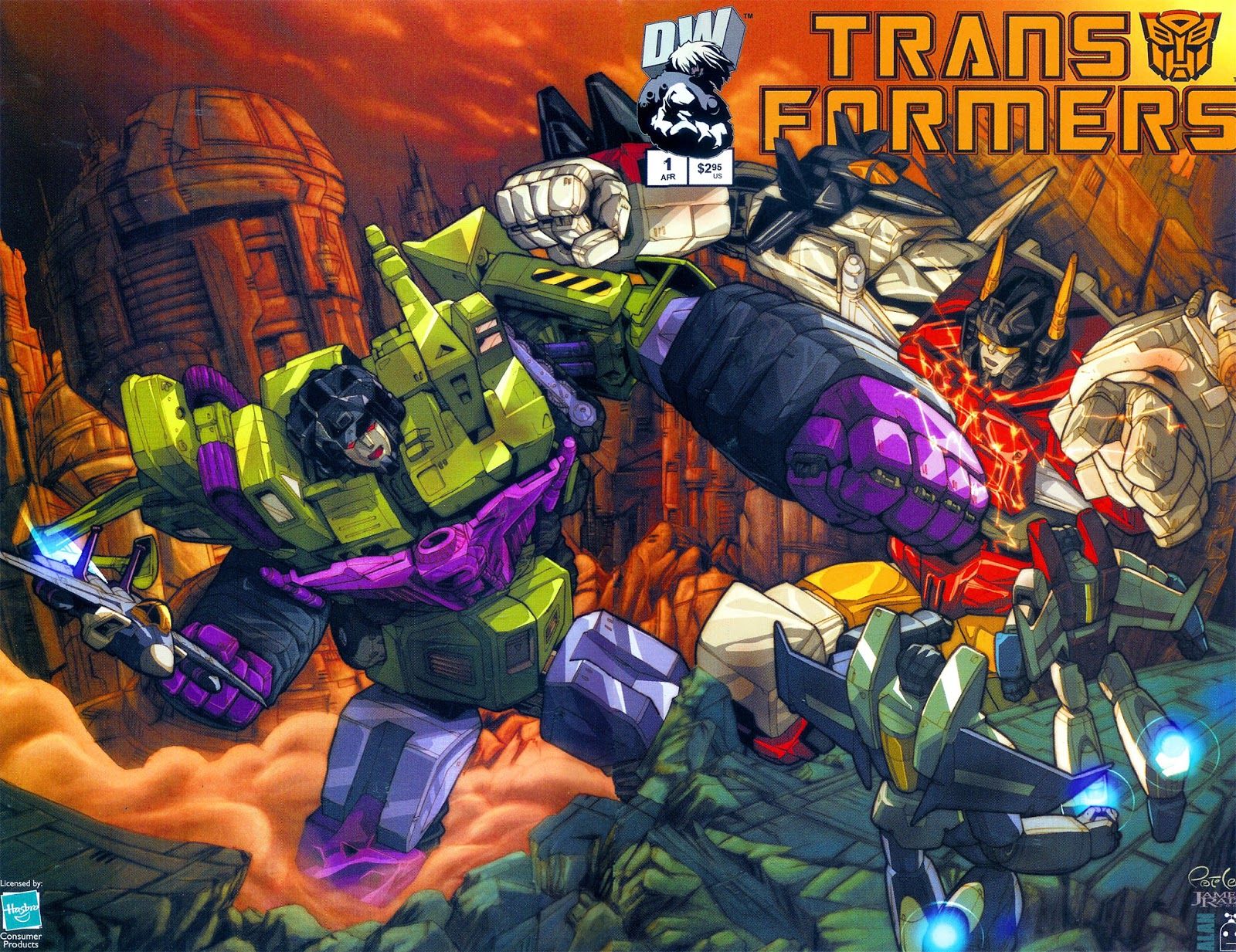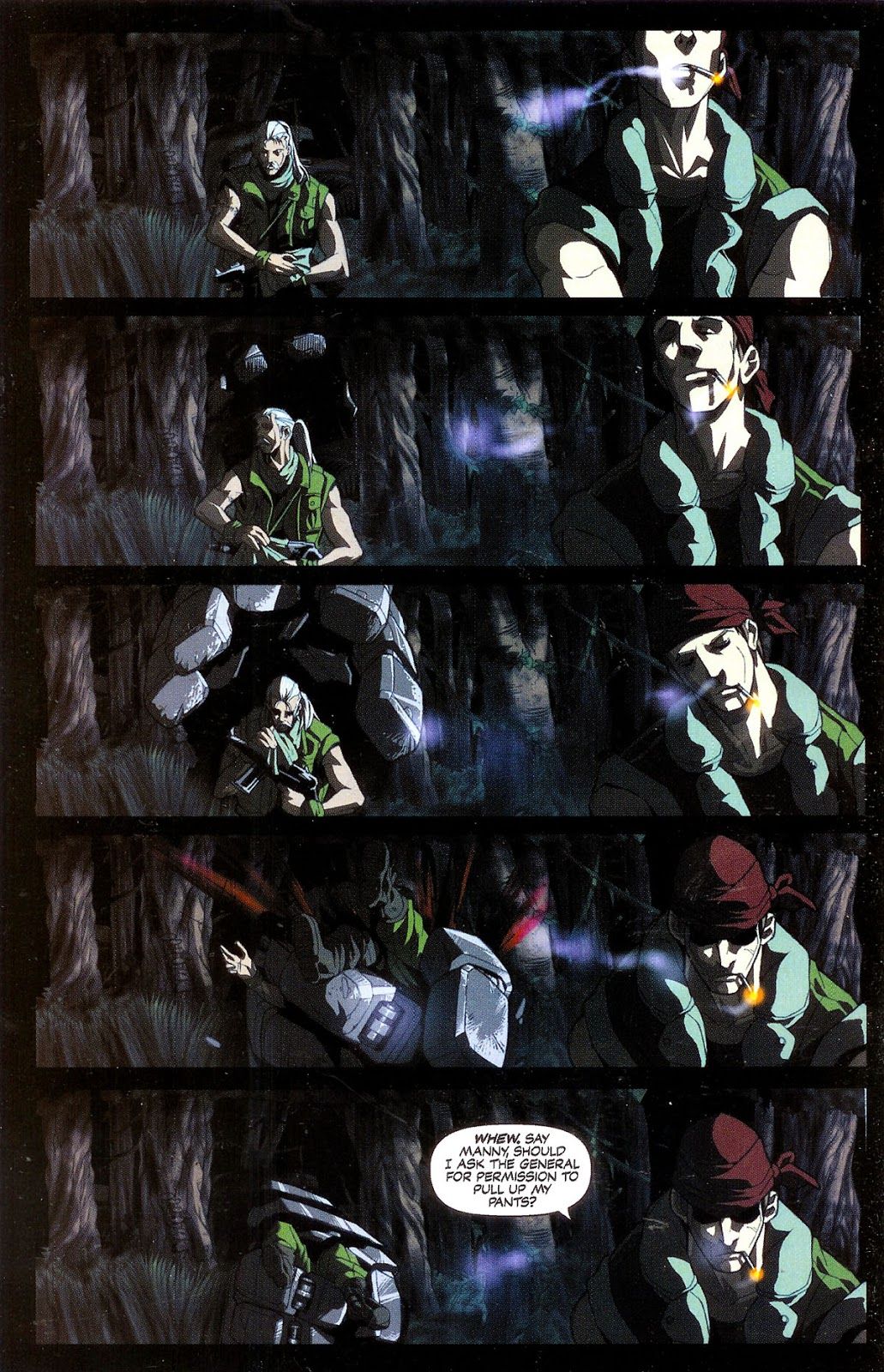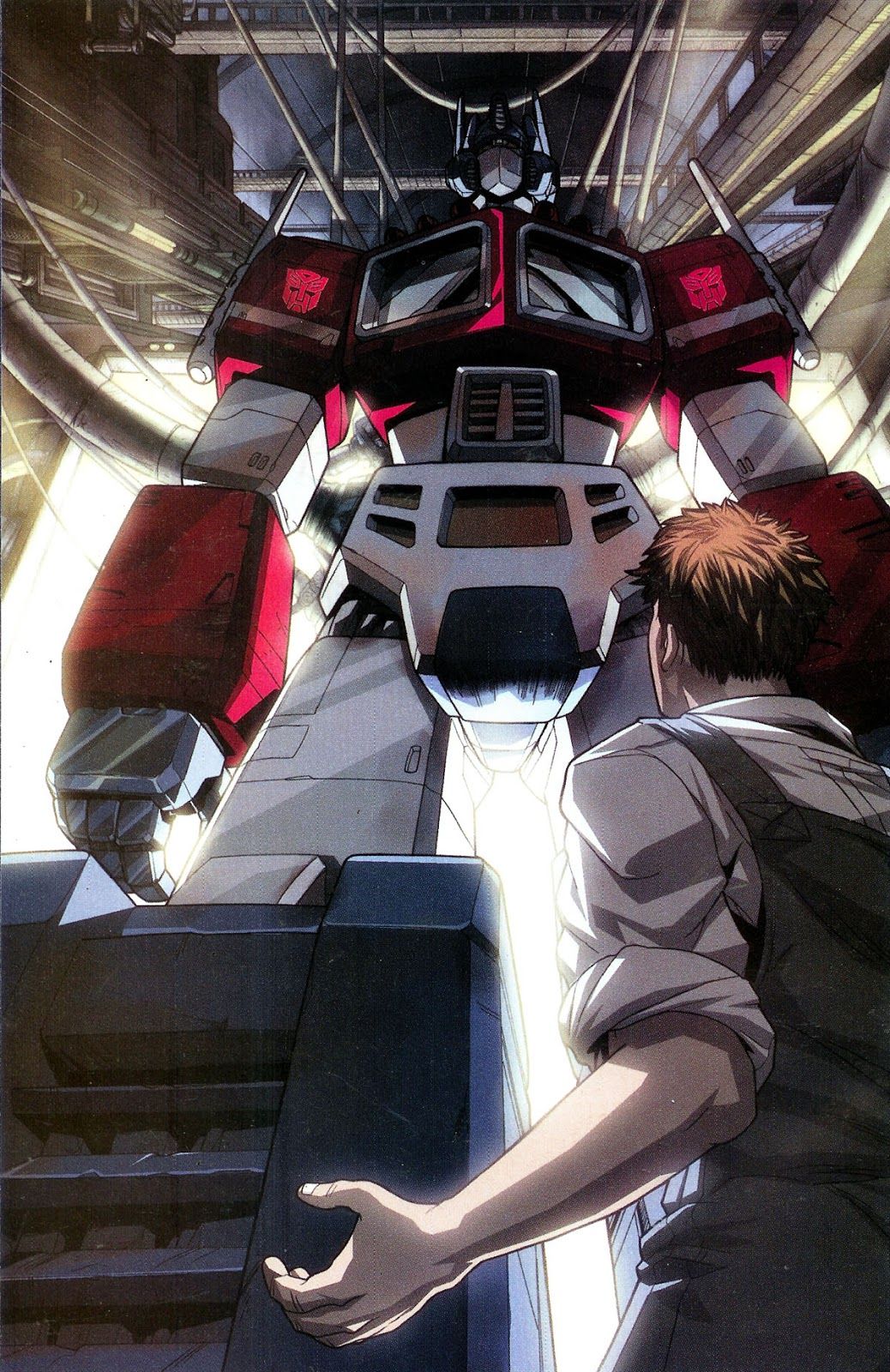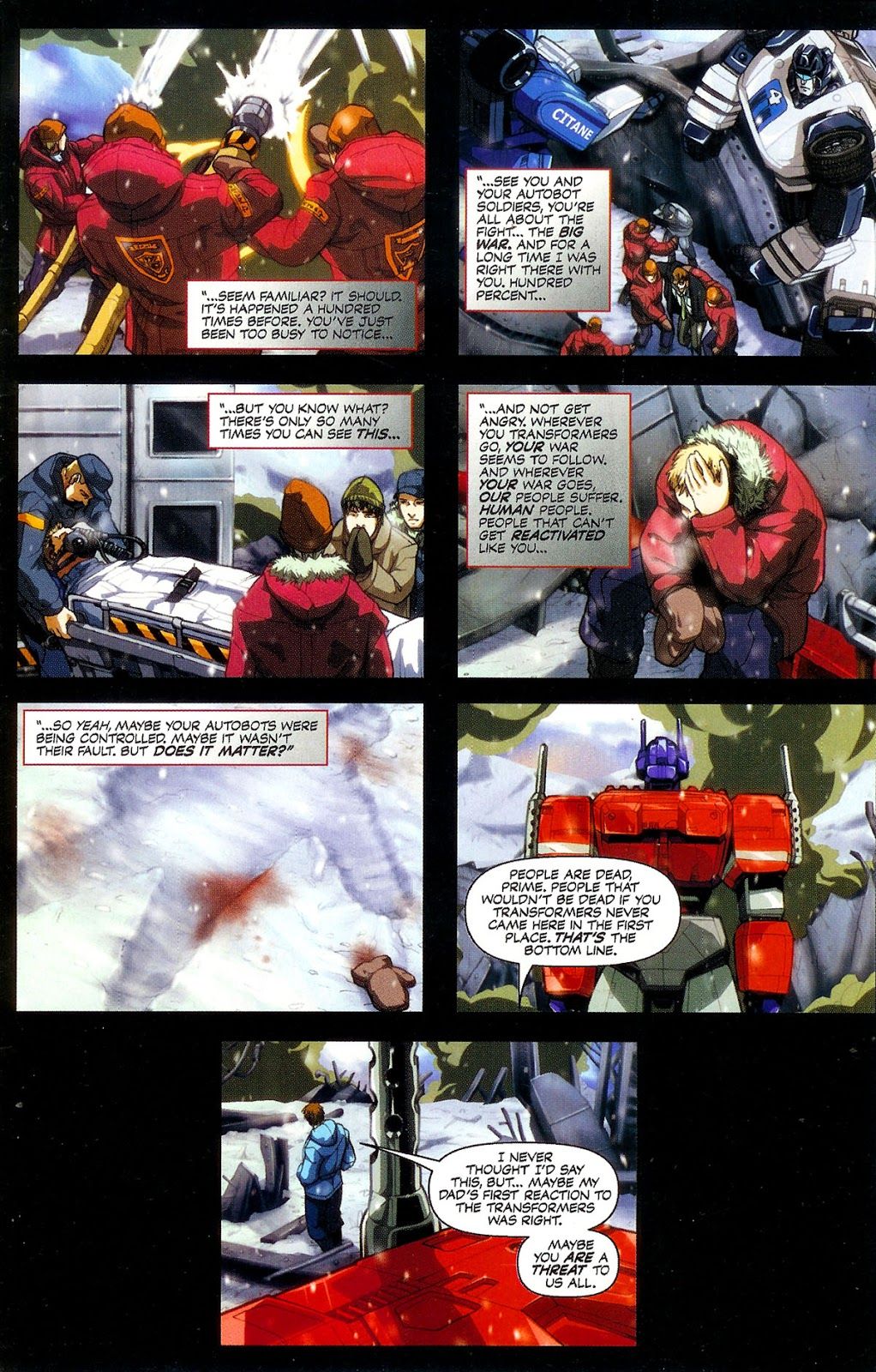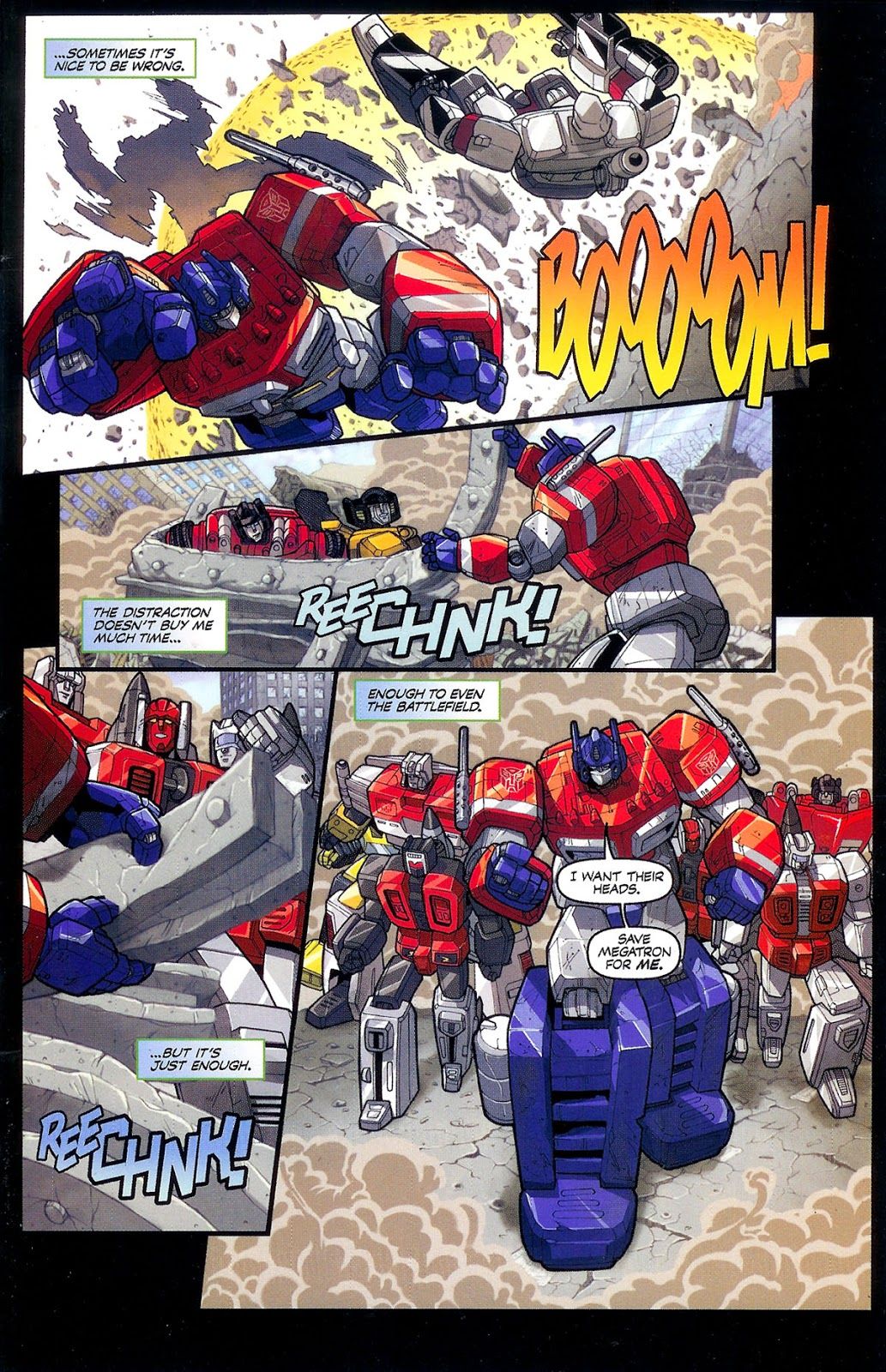Welcome to the fifth installment of Nostalgia Snake, a look at 2000s revivals of 1980s properties, revivals now so old they've also become nostalgic. (Hence the snake of nostalgia eating itself.) This week, we're reviewing the initial Transformers miniseries from a company very much of its era, Dreamwave. And if you have any suggestions for the future, let me hear them. Just contact me on Twitter.
Following a preview comic, Dreamwave Productions released the six-issue miniseries Transformers: Generation 1 to outrageous sales numbers. In 2002, four of the issues topped Diamond Comic Distributors' sales charts, one was number two behind the launch of Dreamwave's Transformers Armada #1, and another was knocked out of the top slot by Marvel's Fantastic Four #60 (sold for only 9 cents as a publicity stunt to promote its new creative team, and to take a jab at DC's recent 10-cent Batman comic).
One thing Dreamwave had going in its favor, in addition to the pull of nostalgia and its innovative coloring technique, was its embrace of the variant cover gimmick. Dreamwave wasn't the first to utilize numerous covers for the same comic, but the now-defunct publisher was an early believer in publishing variants on every issue, and every printing, of its titles.
Not many fans complained, though. The covers featured a plethora of characters from the Transformers canon, offering Dreamwave's take on Transformers who might be months away from making official appearances. For a small independent company, Generation 1 was an immediate, and staggering, success. The "Prime Directive" storyline marked the return of a Transformers comic after almost a decade, an absence that the story treats as an integral plot point.
For a series sold so heavily on the art, the interiors are irritatingly inconsistent. Fans anticipating superstar artist Pat Lee's interpretations of the Transformers had to contend with pages that looked rushed, with those intricate detail lines on the Transformers dropping out, and humans that appear increasingly grotesque. The slick polish of the earlier work often disappears, though there does appear to be more of an effort to sell the final, big battle. Without the intricate coloring technique, it's questionable how long fans would've tolerated this work.
The miniseries was written by Chris Sarracini and pencilled by Pat Lee and Edwin Garcia (with Sigmund Torre rumored as a ghost for several pages). Within the first few pages, we're reintroduced to Spike Witwicky, one-time teen sidekick to the Transformers, now an adult living with his wife and son in Cleveland. He's approached by General Hallo from the United States Army, who demands his help.
Spike soon finds himself in the Pentagon, and via a newspaper article, readers are teased with info about "the Ark II disaster" of June 24, 1999. We soon learn Spike's father and numerous other humans died in the disaster, with a tease that Spike's brother Buster has yet to recover from the loss of their father, Sparkplug Witwicky. This reference to Buster, the teen sidekick from the original Marvel comics that never appeared in the animated series is a hint Dreamwave is attempting to merge the comics and cartoon continuities.
A full reproduction of the newspaper article in the closing pages of the introductory issue fills out the details. Following an orchestrated effort between the Autobots and various human governments, the Decepticons were finally defeated in battle. An Ark II spacecraft was constructed in 1999 to send the Autobots back home with their Decepticon captives, and a select group of humans had been selected to tag along. A mysterious mechanical failure caused the ship to explode over the atmosphere, however, presumably killing everyone onboard. However, the military now has intel indicating Decepticon leader Megatron has returned and attacked a military installation in South America.
In a remote region of Canada, we discover the scarred mystery figure from the preview issue is known as Lazarus, who's brought along a known terrorist for the sake of making a deal. Lazarus introduces the terrorist to the inert body of Megatron, explaining the Transformers he's discovered have been fitted with a control mechanism that enables him to animate their bodies. They exist now, Autobot and Decepticon, as his puppets, sold to the warmonger with the deepest pockets. Megatron responds to the orders Lazarus gives as show, until Lazarus commands Megatron to kneel before him. Lazarus dismisses this as a bug, though behind their backs, Megatron's eyes glow ominously.
In the first issue's closing pages, General Hallo escorts Spike to Area 24, where Spike is asked to help the military communicate with a Transformer recently located by the government. Spike asks which one, as they enter a hangar that houses Optimus Prime. Cue the dramatic closing page splash.
It's a promising opening for the series. Sarracini's story touches on memories of the Challenger disaster, nods in the direction of the recently launched War on Terror, and uses the original Transformers' lengthy time out of the spotlight as a plot point. It's a story about the past, but that doesn't mean everything must be viewed through rose-tinted glasses.
In fact, if you were looking for a simple continuation of the syndicated cartoon, you might be disappointed. Only a few pages after Spike and Optimus are reunited (and Spike uses a portion of the Matrix to revive his old friends), we learn Spike blames Optimus for the death of his father, and is actually quite sick of the war the Autobots and Decepticons have brought to Earth. There are some shades of Star Wars: The Last Jedi here, where the beloved hero of the past is telling the audience this thing they love from their childhood is actually quite destructive and stupid.
Even more subversion follows, as fan-favorite Grimlock, leader of the Dinobots, turns against the Autobots and sides with the Decepticons (not surprisingly, Megatron didn't last under Lazarus' sway for long.) As the Decepticons resume their war against humanity, Spike discovers General Hallo was actually the man responsible for the Ark II disaster and had his own plan to control the Transformers. The scheme was coopted by his former associate, who we now know as Lazarus. While watching a battle between the Autobots and Decepticons in San Francisco -- one that emphasizes human casualties and collateral damage, clearly evoking memories of 9/11 -- an increasingly unhinged General Hallo orders a nuclear strike on the city.
The Autobot gestalt Superion is tasked with saving San Francisco from the nuclear attack, though absorbing the blast costs the lives of all five Aerialbots. Meanwhile in Canada, the Autobot Wheeljack is forced to sacrifice his life to save the Earth from a cyber-virus designed by Megatron to transmutate the Earth into Cybertron. In Washington, Spike is rescued when the president arrives with armed officers, taking down the demented General Hallo.
Following the San Francisco battle, Grimlock has been left behind by the Decepticons. Optimus offers Grimlock a place back in their ranks, but in the face of a vocal anti-robot mob, he refuses, stating not even Optimus can make things the way they used to be. But one element of the past is preserved, as Spike congratulates Optimus on the Autobots' victory and makes amends with his former friend.
Admittedly, this feels like an unearned moment. If anything, the destruction of the city just proves the point Spike was making earlier. While the early issues do lend themselves to Sarracini's more adult tone, any nuance is lost in the final installments, as the plot takes a backseat to page after page of destructive robot action. Still, the finale already has enough Pyrrhic victories, so arguably giving Optimus and Spike a moment of reconciliation prevents the miniseries from ending on too dour a note.
The audience was certainly sold on the promise of Dreamwave giving you big, anime-influenced action that reminded you of the cartoon, so the extended fight scene at the end is probably defensible. Losing the suspense and more nuanced writing of the opening issues is a shame, though, as the closing installments feel largely generic. There's a setup for the Transformers facing a different life on Earth, where the public is equally disdainful of both Autobots and Decepticons, which hints at an uneasy future for the Autobots. But, similar to Last Jedi, after postulating that the past wasn't as innocent and fun as we remember, the creators seem unable to truly go anywhere with the idea.
Over the years, the Dreamwave run has lost some of its esteem, but this initial miniseries shows true potential. Even if the conclusion is underwhelming, there are intriguing ideas here, as the story attempts to do more than exploit nostalgia. In certain regards, it's not quite what anyone would expect, which isn't a bad thing. Having remarkable production values that remain impressive 20 years later doesn't hurt, either. As a document of how the concept was reintroduced to its initial fans, during a peculiar time in American history, the series earns its unique place in Transformers history.
0 Links

